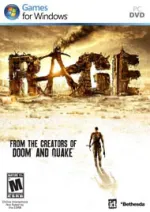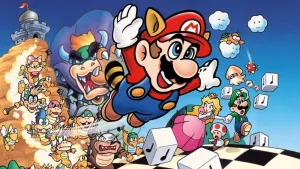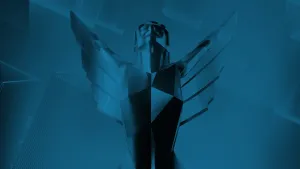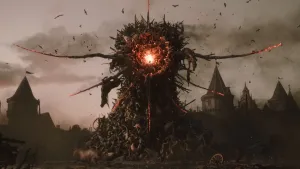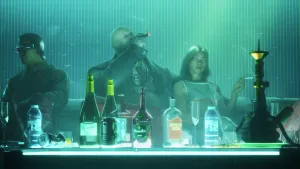Rage
“Where’s the Emmy?” Tim Willits asks several pockets of employees as
we tour the hallowed halls of id Software’s Mesquite, Texas office. The
co-owner and creative director of the company shows us everything from
the original toy shotgun used in Doom to the darkened floor where Doom
4 is currently in development. As we settle in to a spacious conference
room, several scouts pop in and out with leads on the last known
location of the prestigious award. Miss Donna, the longtime office
manager and “id mom,” appears triumphantly at the door holding a beat
up black box. Inside is the familiar gold statuette bestowed on the
company for “the development of 3D software engines.”
If the
wayward Emmy had more room for text it could mention id’s legacy of
pioneering the first-person shooter and online multiplayer
deathmatches. Since its inception in 1991, id has found incredible
success with only a handful of franchises – most notably Wolfenstein,
Doom, and Quake. The company hasn’t released a major in-house-developed
project since 2004’s Doom 3, and hasn’t launched a major new game
franchise in 13 years. Rage represents a new chapter for the company –
serving as the first showpiece for the groundbreaking id Tech 5 engine
and the company’s first attempt at open world gameplay, driving, and,
well, an honest-to-goodness story.
Enter the wasteland as we take you through a full hour and a half of
straight gameplay and address the burning questions that have remained
unanswered since Rage’s initial announcement two years ago. Just don’t
ask when it’s coming out.
We want to do something different,”
says creative director Tim Willits. “We’ve done Doom, Quake, and
Wolfenstein and they all have a very solid formula. We want to take
that solid formula, that first-person action we do so well, and expand
it. We want to have a richer story. We want to have more character
interaction. We want to have a much larger world.”
This larger world is set approximately 80 years after a devastating
asteroid collides with Earth and kills most of civilization. That isn’t
to say that humanity wasn’t prepared. Governments around the globe
banded together to enact the Eden Project, burying hundreds of pods, or
“arks,” beneath the ground containing a dozen people each. Like the
crew of a ship, each member has a specific complementary skill that
would help rebuild society once they emerge from cryo-sleep. That’s how
it was supposed to work, anyway.
An earthquake cracks open your
character’s ark before the scheduled time. The rest of the crew is
dead, and all of the onboard data is ruined, leaving him no clue as to
what he’s supposed to do once he reaches the surface.
“In the very beginning of the game when you wake in your ark you
step out [we want players to be] like, ‘Yeah, this is an id game. This
looks like a space station. I’ve played Doom. This is cool,’” says
Willits. “And as soon as that door opens it’s like, ‘OK, this is
different.’”
Our demo starts a couple of hours into the game,
but the bright skies and wide open canyons still have the intended
startling effect to anyone who’s shotgunned his or her way through id’s
traditional pitch black corridors. Our character is standing by an old
shack, and a radioactive green swamp looks to be the only water source
for miles around. Inside the structure we meet Crazy Joe.
“You
seen a mutant yet?” asks the weird old prospector. “Them are just like
you and me. When the space rock hits, the unlucky few on the surface
started changing. Them were crazy days. Didn’t have no time to get
deeper, I suppose.”
Joe warns us to run if we see one so we head outside and, of course,
a mutant is atop a distant rock structure scanning the horizon.
Willits, who’s manning the controls, equips a tri-tipped boomerang
called the wingstick. He gives it a toss and it takes a wide arc
through the canyon before cutting down the distant enemy and flying
back to our hands. With the danger out of the way, we hop in a nearby
dune buggy and blaze over the dry desert landscape.
“Unlike in
other games, where vehicles are disposable, in Rage we want your
vehicle to be really an extension of your first-person avatar,” Willits
says. “The neat thing about the buggy is that you had to earn it. It
wasn’t given to you.”
“It’s like when you turn 16,” lead
designer Matt Hooper adds. “It’s somewhat beat up and stuff, but it’s
your vehicle.” Players start with an ATV, which provides very little
defense, and must fight bandits for parts and perform jobs to earn
money to get the buggy up and running. Now that the buggy is
functional, our latest task is to deliver a message to the mayor of
Wellspring.
After a quick scuffle with some bandit buggies, we
arrive at our destination. Wellspring is a well-fortified Western/Asian
fusion themed town that serves as your home base for the first half of
the game. As we maneuver through the streets, we’re met with suspicion
for both our stranger status and the fact that we’re wearing an ark
suit. Turning in an ark survivor is a rare opportunity to earn a hefty
reward from a mysterious group called The Authority. “You hear whispers
of them when you arrive and people are concerned about them, but you
don’t know much about them,” Willits says. “You’re out to learn what
their true purpose is.”
On the way to the mayor’s office, we
pass a no parking sign that has been altered to read “no peeing.” The
local bar, adorned with stuffed mutant heads, shows broadcasts of
current races and episodes of hit show Mutant Bash TV. Mayor Clayton is
a jovial sort, welcoming you to his town. The message you deliver for
your previous employer requests help with bandits.
“He must
really respect you to give you this important job, so for now I’ll
trust you, too,” Clayton says. “You can stay here at Wellspring. I’ll
give you supplies, but not dressed like that. You’ll bring The
Authority snuffing around and I sure don’t need that.”
We head
over to the Outpost to cover up our conspicuous attire and, even though
we didn’t see it ourselves, the outfit you choose has some kind of
effect throughout the rest of the game. But that doesn’t mean Rage has
a range of moral choices. “We don’t have a good versus evil choice,”
Willits says. “That’s not the game we wanted to play because we always
end up playing the good guy, which is odd for [id].”
“We wanted
to focus on ‘I like racing.’ ‘I like stealthing.’ ‘I like adventuring
and finding things,’” Willits adds. “Those are the choices that we
wanted to give people.”

Moving
forward another couple hours, we’re tasked by the Wellspring sheriff to
destroy a bomb factory run by a bandit clan called The Shrouded. This
group specializes in crafting small remote controlled cars with
explosives attached to them. They’re a real pain in the ass to everyone
crossing through the northern lands so you’ve got to put an end to
their production. We head over to mechanic Mick’s garage to grab our
custom buggy and hit the road.
Currently, the minimap in the
upper right corner looks like a top-down satellite photo of the desert
terrain with a red dot highlighting our objective. The developers are
still tweaking the guidance system following one prime directive. “We
don’t want the player to be lost,” Hooper says. “Tim and I call it
‘open but directed.’ You know that you have to go [to an objective],
but if you see something that’s interesting you’re free to go and
explore.”
Nonetheless, we take a direct route to the factory and
encounter some hostiles along the way. At this point in the game, our
offensive options are a pair of chain guns attached to our buggy and a
trusty front rammer. We blow up a couple of vehicles in a hail of
bullets and play chicken with the next, swerving out of the way at the
last second. An arrow indicator on the back of our buggy informs us of
danger from the rear, so we pull the handbrake for a quick 180-degree
turn. A hit of nitrous rockets us forward and we ram the bandit at full
speed, turning his car into a massive fireball. We make it to the
factory in rough shape, but at least we didn’t need a tow back to the
garage – currently the only way to repair vehicle damage.
Once
inside, a heavy door is blocking the way. A small vent looks to be the
only way forward, so we pull out the blueprints on how to build our own
RC car bomb. This engineering system allows players to build everything
from wingsticks to lock grinders provided they have the plans and the
parts. Steering the small RC car through the tight corridor works
exactly like driving full sized vehicles, except now we can
self-destruct at the touch of a button. Blowing up the first bomb cache
makes a hole large enough for us to fit through and proceed.
A
Shrouded bandit is walking away from us down a hallway and we pull out
a crossbow to take him down quickly and quietly, showing that Rage has
a stealthy side in addition to id’s trademark balls to the wall action.
Eventually, players can earn alternate ammo types and weapon upgrades
like scopes and aiming stabilizers. The crossbow in particular shoots a
projectile that allows brief control of the enemy before blowing him up.
At
the press of a button, four weapon slots appear, corresponding to the
directions on a d-pad. Willits selects the machine gun and moves on. In
fact, the entire demo is being played with an Xbox 360 controller
plugged into a PC — a stark change for a developer with such a strong
PC legacy.
“We don’t let them use the mouse right now because
the largest chunk of our market’s going to be on the consoles,” says id
co-founder and technical director John Carmack. “That’s actually a
pretty strict dictum around here. Tim will go around and whack your
hand with a ruler if you’re using a mouse playing the game. I mean,
yes, you can use the mouse for it, but it’s critical that the
controller be the way that we design the game.”
We approach the
fallen foe and tap a button over his body. A loot screen appears
showing what kind of ammo and items we can swipe. Getting rid of flying
boxes is one of the many small changes id is making as it modernizes
some of its longstanding conventions. Another is the inclusion of
regenerative health.
“I don’t want to get into it too much, but
you, as an ark survivor, have certain physical characteristics that
make you special, one of which is the ability to heal,” Willits says.
“Your heart has functionality that, even after you die, you can bring
yourself back to life. So you are more special than just a generic kind
of guy. You have special physical characteristics.”
Clearly
outnumbered as we approach the next room, we set up a turret to
distract the guards as we move to cover. With the turret chipping away
at the foes’ health, we move to a flanking position and finish them off
with little effort. For the next group, we use a small sentry bot
equipped with a machine gun to take the brunt of the damage before we
enter the room. We toss a couple of grenades in to weaken their
position, sending a few bandits flying through the air in the process.
We throw out a wingstick and the bandits jump and roll out of its path.
However, this also means they’ve left cover, so we mow them down with
shotgun blasts. All that’s left now is to blow up the second cache of
bomb materials and we’re out of there.
We pull back into the
garage in Wellspring and have Mick fix up our ride. In the final game,
he’ll offer congrats on the latest completed mission and point you
towards any new developments in town. Since we’ve got experience
driving around the wasteland, now it’s time to see if we can handle
going pro in the racing circuit. Placing well in these events nets us
racing certificates that can be used to purchase exclusive parts and
upgrades from dealer Rusty’s shop.
The town’s racing promoter
tries to lure us in. “Greetings. My name’s Jackie Weeks and I’m the
impresario who runs all the high speed races in Wellspring… and I do
mean all of them,” he says. “If you’re interested in testing your skill
you can go talk to my business associate over there, Slim.”
We
sign up for a three-lap race on a stretch of abandoned highway to the
south. Instantly, we’re at the starting line alongside three opponents
waiting for the green light. No one starts with any boosts or ammo,
creating a mad scramble for the power-ups strewn about the track.
Hostiles shoot at racers as they pass by. We whip around a couple
turns, ram a rival out of the way, and grab some bullets. We unload
into the back of the next racer, but lose him as he grabs some air from
a ramp in the latter section of the track. However, it’s not long
before we catch up and transform his ride into a massive flaming wreck.
We place first, taking home 15 certificates plus a few more for taking
out other racers along the way. A deep parts system allows players to
bump up stats like acceleration, suspension, and traction. Other tweaks
include boost upgrades, a magnet that draws power-ups towards your
vehicle, and new combat options like tire rippers, bombs, and EMP
shields.

Other
early race examples range from solo time trials to six-man rally races
through the wasteland, possibly driving RC bomb cars. Right now,
however, we’re interested in the top prize for a high profile race only
open to sponsored drivers. To earn a sponsorship, Jackie drops a tip
that Mutant Bash TV may be looking for a driver.
We hit the
wasteland again in search of the television studio. A massive sign and
freaky clown face entrance welcome us inside. Portly producer JK Stiles
is surrounded by a multitude of monitors and swivels around on what
looks to be a futuristic perma-toilet to greet you (can’t miss a moment
of the show, you know).
“You want a sponsorship and I need a
contestant,” Stiles says. “The game is easy. You enter my little arena
and the game begins. The rules are pretty simple. Kill or be killed.
Make it through alive, give me a good show, and you’ll have your
sponsorship. Easiest sponsorship in the wasteland. You ready?”
Like
that we’re shuffled into a gloomy hallway. The game show announcer’s
voice crackles through the speaker system. “Welcome to Mutant Bash TV:
the show where carnage is king. We’ve got a fresh new competitor here
today!” A live crowd cheers with delight watching some far off
real-time feed.
In the first room, mutants stream out of doors
and holes in walls. We use a shotgun to keep them at bay and a
satisfying “ka-ching” sound effect rings out for each kill. The next
room is decorated in a jungle motif and mutants jump from branches
toward us. A giant spinning fake gorilla rotates around the room, its
multitude of blades grinding up any mutant or contestant that gets in
its path. Room three contains an oversized slot machine with randomly
appearing targets to shoot that grant bonus cash whenever three dollar
signs are lined up. The final area, dubbed “shipwreck cove,” features
random spikes springing up through the floor, forcing us to keep in
constant motion as we blast mutants. Once they’re all taken down, a
final door rises and a massive mutant with a tentacle arm charges out.
He whips it around forcing us to take evasive action, toss grenades,
and unload some buckshot. Eventually he goes down and we are presented
with our payday: $755. We’re welcome to try again to better our
accuracy, total time, and slot machine prowess. Either way, we can tag
new mutants out on wasteland plains as we come across them so that
Stiles can add to his house of horrors.
So ends the demo of id’s
latest game. But that doesn’t mean we didn’t gather hints as to what’s
in store later in the game. Looking over concept art, we see crashed
airliners in the desert and stranded ships in bone dry former seabeds.
Moving beyond the wasteland, there appears to be some dead cites and a
dark neon subway colony.
“Historically, in a lot of the id
games, the story starts right when you show up and it’s over at the
great finale at the end,” Willits says. “We really wanted to try and
create a Rage universe. We don’t necessarily need to do Rage 2, 3, 4,
5. But we can do games within the Rage universe that people are
familiar with. Star Wars does a great job of this. The environment and
the character and the history of the world, we want that to be just as
important as the story that you play through. Characters will tell you
backstory. The Authority and how it’s presented will lend to the fact
that they have a place in the past and the future. Even the big climax
at the end is definitely a good endgame, but it leads to something that
could be bigger and greater later on.”
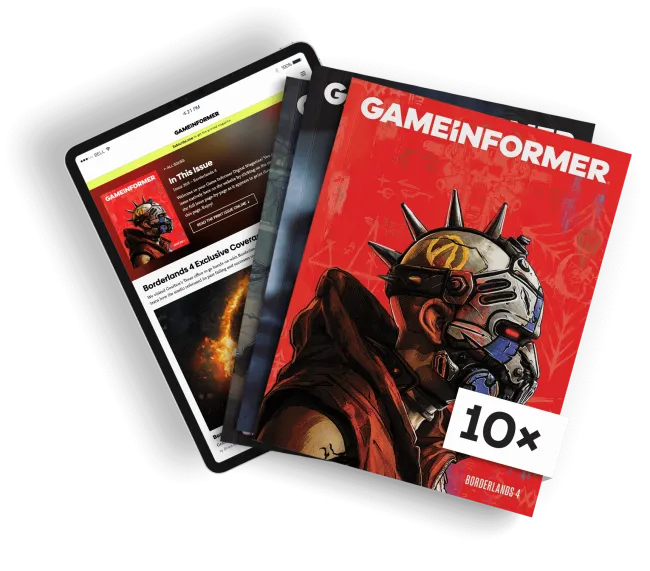
Get the Game Informer Print Edition!
Explore your favorite games in premium print format, delivered to your door.
- 10 issues per year
- Only $4.80 per issue
- Full digital magazine archive access
- Since 1991


